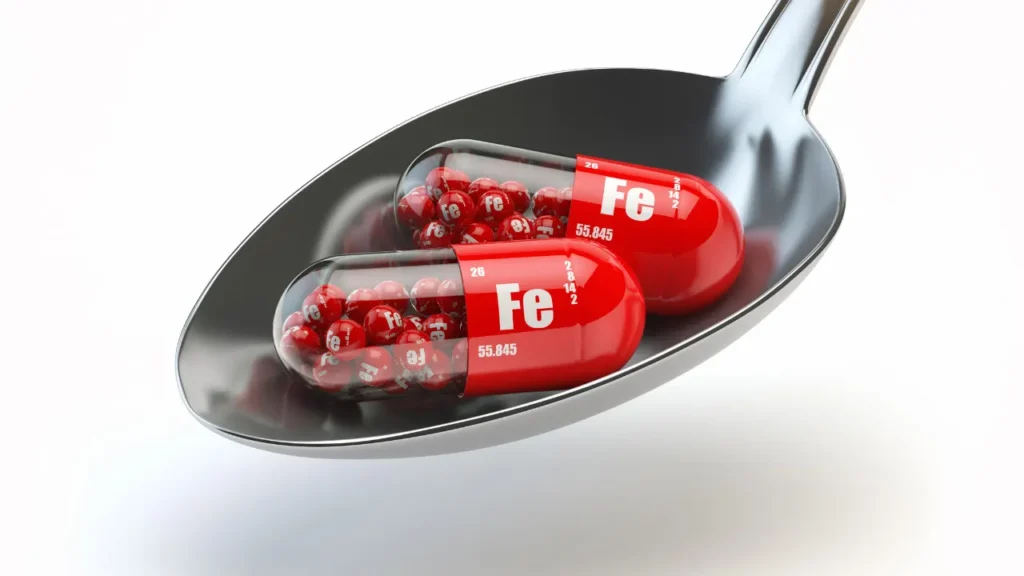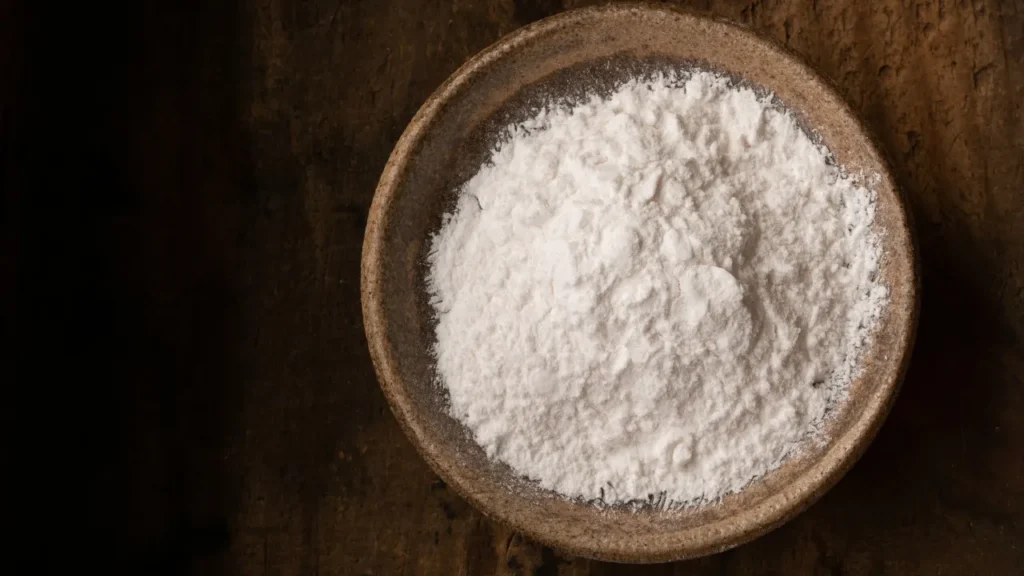A starchy material called arrowroot is derived from the roots of various tropical plants. Indigenous populations in the Americas and Africa have long used this material as a food source and a traditional remedy. Due to its conceivable health advantages, arrowroot has recently grown in favor as a nutritional supplement. In this article, we will examine the nature of arrowroot, its health advantages, the best dosage, side effects, possible drug interactions, and other pertinent details about the appropriate use of this nutritional supplement.
You May Also Like:
Five Great Reasons to Try a Nootropic Mushroom Supplement
What Are the Best Mushrooms for Brain Health? Here Are the Facts.
Arrowroot: Benefits, Dosage, Side Effects, Drug Interactions, And Other Important Information is an original (NootropicsPlanet) article.
Nature of Arrowroot
The rhizomes, or subterranean stems, of various tropical plants, such as Maranta arundinacea, Zamia integrifolia, and Manihot esculenta, are used to make arrowroot, a kind of starch. The rhizomes are cleaned and ground into a pulp to release the starch. The pulp is subsequently cleaned to remove the fiber and other impurities. The finished starch is powdered and dried.
White, flavorless, and odorless powder, known as arrowroot, is very easily absorbed. In addition to being used as a replacement for wheat flour in gluten-free baking, it is frequently used as a thickener in soups, sauces, and desserts.
Health Benefits of Arrowroot
The nutritious content of arrowroot and its capacity to facilitate digestion make it a potential source of a number of health advantages. The following are a few possible health advantages of arrowroot:
- Digestive Health: Dietary fiber, present in arrowroot, can aid in promoting regularity and preventing constipation. By delaying the absorption of glucose in the small intestine, it can also help in the digestion of other foods. Resistant starch, a form of carbohydrate found in arrowroot, is digested by intestinal flora to create short-chain fatty acids with anti-inflammatory properties.
- Nutrient Content: Potassium, iron, and B vitamins are just a few of the essential nutrients that arrowroot is a strong source of. These nutrients are crucial for strengthening the immune system, increasing energy production, and maintaining appropriate blood pressure.
- Weight Management: Arrowroot is a wonderful choice for people trying to manage their weight because it has fewer calories than wheat flour. Additionally, arrowroot’s resistant starch might heighten feelings of satiety, which could aid in lowering daily caloric consumption.
- Potential Blood Sugar Regulation: Some research suggests that arrowroot may help regulate blood sugar levels due to its low glycemic index and resistant starch content. This could benefit individuals with diabetes or those at risk of developing the condition.
- Skin Health: Burns, cuts, rashes, and other skin disorders have all been treated topically using arrowroot. It has calming and anti-inflammatory qualities that can help lessen inflammation and redness.

Chemistry of Arrowroot
A starchy material called arrowroot is taken out of the rhizomes of various tropical plants. Starch, a carbohydrate type, makes up most of arrowroot’s chemical makeup. We shall give a thorough analysis of arrowroot’s chemistry in this article, covering its chemical composition, characteristics, and potential health advantages.
Chemical Composition
Two different forms of starch molecules, amylose, and amylopectin, make up arrowroot starch. Amylopectin is a branching molecule, whereas amylose is a linear molecule. The long, linear chain of glucose units that make up amylose’s chemical structure are connected by -1,4-glycosidic linkages. While 1,4-glycosidic bonds connect glucose units in amylopectin, a few 1,6-glycosidic links occasionally branch off the main chain.
Physiological Mechanism of Action
It needs to be clarified how arrowroot affects the body and brain physiologically. However, studies have revealed that arrowroot includes several substances that could be healthy.
Amylose, a form of resistant starch not completely digested in the small intestine, is one of the key substances in arrowroot. Instead, it moves to the large intestine where gut bacteria ferment it to create short-chain fatty acids like butyrate, acetate, and propionate. The anti-inflammatory properties of these short-chain fatty acids have been demonstrated, and they may contribute to better gut health.
In addition to resistant starch, arrowroot includes several vitamins and minerals vital for sustaining general health, including potassium, iron, and B vitamins. These nutrients are crucial for maintaining healthy blood pressure, the immune system, and energy creation.

Optimal Dosage of Arrowroot
As a dietary supplement, arrowroot has no established dose. The dosage will change depending on the person using it and the purpose. Arrowroot is primarily used as a small-scale thickener, approximately one to two tablespoons per cup of liquid. Arrowroot powder can be a nutritious supplement in smoothies, baked goods, or other dishes. It is advised to begin with a tiny dose, perhaps 1-2 teaspoons daily, and gradually increase as tolerated.
Side Effects of Arrowroot
In general, moderate arrowroot use is regarded as safe. However, some people might have allergic reactions to arrowroot, particularly if they’ve previously had allergies to other Marantaceae-family plants. Itching, swelling, hives, and breathing difficulties are all possible signs of an allergic reaction. After taking arrowroot, if you have any of these symptoms, stop using it and get help from a doctor.

Potential Substance Interactions with Arrowroot
There are no recognized drug interactions involving arrowroot. However, it is always important to speak with a healthcare professional before including any nutritional supplements in your diet if you are on drugs or have a medical condition.
Although arrowroot is typically regarded as safe for use, it could interact with some drugs or other substances. This page will give a general review of possible drug interactions with arrowroot.
Bleeding Agents
Warfarin and aspirin are two blood thinners with which arrowroot may interact since arrowroot contains substances that can thin the blood and raise the likelihood of bleeding. Before using arrowroot as a dietary supplement, people using blood thinners should speak with a doctor.
Medications for Diabetes
Additionally, arrowroot and diabetic medicines like metformin may interfere because of the possibility that arrowroot has hypoglycemic effects that could drop blood sugar levels. Before using arrowroot as a dietary supplement, people using diabetes drugs should speak with their doctor.
Best Responsible Uses of Arrowroot
Due to its possible health advantages, arrowroot has become a popular dietary supplement. Using arrowroot responsibly involves considering its potential advantages and disadvantages, consultation with medical experts, attention to dose instructions, and careful observation of side effects and drug interactions. Further knowledge of arrowroot’s medicinal potential and safety profile will surely improve its usage in a safe and effective manner as research progresses. Here are some best practices for the responsible use of arrowroot:
- Cooking and Baking: Arrowroot can be used as a thickening agent in various recipes, such as soups, sauces, and desserts. It can also be used as a substitute for cornstarch in recipes. Use arrowroot sparingly and efficiently to avoid excessive consumption of refined starches.
- Gluten-Free Alternative: Arrowroot flour is gluten-free, making it a suitable option for those with gluten sensitivities or celiac disease. Using arrowroot as an alternative to wheat flour in baking can provide options for individuals with dietary restrictions.
- Natural Body Care: Arrowroot powder can be used in homemade natural body care products like talcum powder or dry shampoo.
- Minimal Processing: Choose minimally processed arrowroot products whenever possible. Less processing typically means fewer additives.

Arrowroot:
Conclusion
Arrowroot can offer several potential health benefits when consumed as a supplement or included in a balanced diet. While more research is needed to understand its effects fully, some evidence suggests that arrowroot may promote digestive health and blood sugar regulation. Overall, incorporating arrowroot into a balanced diet can be a nutritious and versatile option, particularly for those seeking gluten-free alternatives or looking to support a healthier lifestyle.
As with any dietary supplement, moderation and variety are key for optimal health outcomes. However, it’s important to note that while arrowroot can be a part of a healthy diet, it should not be relied upon as a sole source of nutrients. Additionally, individuals should consult with a healthcare professional before starting any new supplement regimen, especially if they have underlying health conditions or are taking medications.
References:
- Arrowroot (Maranta arundinacea L.). (n.d.). Retrieved from https://www.ncbi.nlm.nih.gov/pmc/articles/PMC5618589/
- Arrowroot. (n.d.). Retrieved from https://www.webmd.com/vitamins/ai/ingredientmono-283/arrowroot
- Arrowroot: Uses, Side Effects, Interactions, Dosage, and Warning. (n.d.). Retrieved from https://www.rxlist.com/arrowroot/supplements.htm
Important Note: The information contained in this article is for general informational purposes only, and should not be construed as health or medical advice, nor is it intended to diagnose, prevent, treat, or cure any disease or health condition. Before embarking on any diet, fitness regimen, or program of nutritional supplementation, it is advisable to consult your healthcare professional in order to determine its safety and probable efficacy in terms of your individual state of health.
Regarding Nutritional Supplements Or Other Non-Prescription Health Products: If any nutritional supplements or other non-prescription health products are mentioned in the foregoing article, any claims or statements made about them have not been evaluated by the U.S. Food and Drug Administration, and such nutritional supplements or other health products are not intended to diagnose, treat, cure, or prevent any disease.


